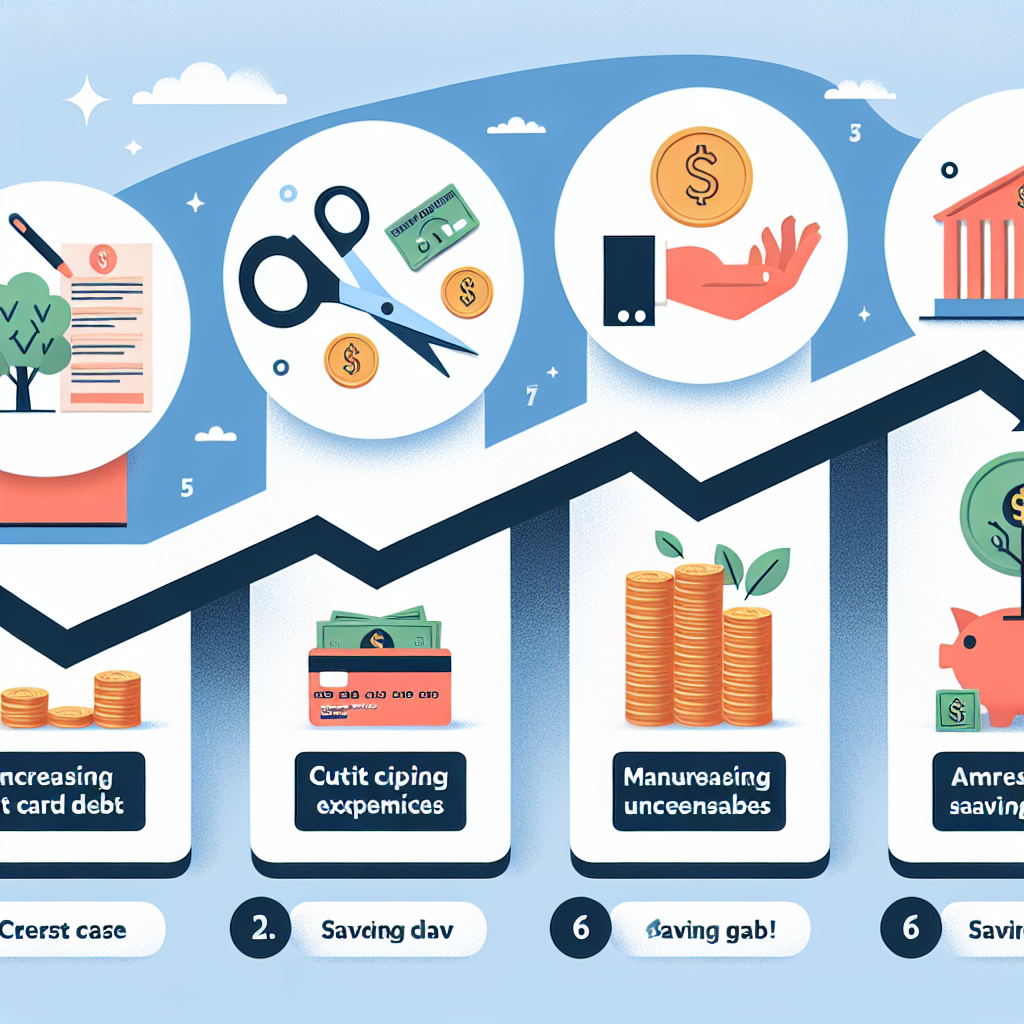
Credit card debt can feel like a weight dragging you down, but you’re not alone. Millions of people grapple with the same issue every day, and the good news is that there are practical steps you can take to get a handle on your finances. If your credit card debt is causing you sleepless nights, it’s time to take action. Don’t worry—you don’t need to be a financial expert to make significant progress. These six easy tips can help you lower your credit card bills and regain control over your financial future.
Struggling with Credit Card Debt? Start Here!
Facing a mountain of credit card debt can be overwhelming, but acknowledging the problem is the first step toward solving it. Take a deep breath and begin by assessing your current financial situation. Gather all your credit card statements and list out your balances, interest rates, and minimum payments. This will give you a clear view of what you’re up against and help you formulate a plan. It might be daunting at first, but knowing exactly where you stand is crucial to creating an effective strategy.
Once you have a full picture of your debt, it’s time to prioritize. Not all debt is created equal; some of your credit cards might have higher interest rates than others. Focus on paying off the cards with the highest interest rates first, while continuing to make minimum payments on your other cards. This approach, known as the debt avalanche method, can save you money on interest in the long run and help you pay off your total debt faster.
It’s also important to examine your spending habits. Track your expenses for a month to identify areas where you can cut back. Do you spend a lot on dining out, entertainment, or impulsive online shopping? Reducing these expenses can free up more money to put toward your credit card payments. Creating a budget and sticking to it can be a game-changer in your journey to becoming debt-free.
6 Simple Tips to Lower Your Credit Card Bills
1. Negotiate Lower Interest Rates: One of the easiest ways to reduce your credit card debt is to call your credit card company and ask for a lower interest rate. It might seem intimidating, but many companies are willing to work with you to keep your business. Explain your situation politely and ask if there are any promotions or lower interest rate options available. Even a slight reduction in your interest rate can save you a significant amount of money over time.
2. Balance Transfers: Consider transferring your high-interest credit card debt to a card with a lower interest rate or a promotional 0% APR. Many credit cards offer balance transfer deals that allow you to pay no interest for an introductory period. This can be an excellent way to make a dent in your debt without accruing additional interest. Just be sure to read the fine print and understand any fees associated with the transfer.
3. Set Up Automatic Payments: Missing payments can lead to late fees and higher interest rates, which only worsen your debt situation. Set up automatic payments to ensure that you never miss a due date. You can automate the minimum payment to avoid late fees, and then make additional payments manually whenever you can. Regular, on-time payments will also help improve your credit score over time.
4. Snowball Method: If the debt avalanche method feels too daunting, try the debt snowball method instead. This involves paying off your smallest debts first to gain momentum and motivation. While it may not save you as much on interest, the psychological boost from seeing debts disappear can keep you motivated to tackle larger balances. Pay the minimum on all your debts except the smallest one, which you pay off as quickly as possible. Then, move on to the next smallest debt.
5. Cut Up Unnecessary Cards: If you have multiple credit cards, consider cutting up the ones you don’t need. This will prevent you from accumulating more debt while you’re trying to pay off what you already owe. Focus on using one or two cards responsibly, and avoid opening new lines of credit. Reducing the number of cards you use can also make managing your debt simpler.
6. Seek Professional Help: If your debt feels insurmountable, don’t hesitate to seek professional help. Credit counseling agencies can offer guidance and help you create a debt management plan. They can negotiate with creditors on your behalf and consolidate your payments. Just make sure to choose a reputable agency, as there are scams out there. Professional help can provide a structured approach and support, making your journey to becoming debt-free less stressful.
Dealing with credit card debt doesn’t have to be a lifelong struggle. By taking proactive steps and implementing these six simple tips, you can start to see real progress. Remember, it’s all about taking it one step at a time and making consistent efforts. Whether it’s negotiating lower interest rates, setting up automatic payments, or seeking professional help, there are multiple ways to tackle the problem. The key is to stay committed and keep your end goal in sight. Before you know it, you’ll be well on your way to a brighter, debt-free future.
